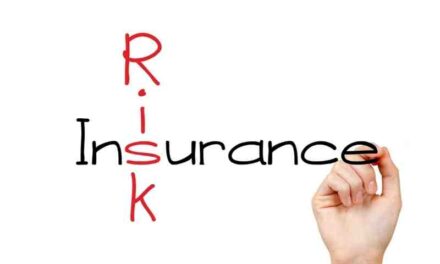A customized car’s insurance premiums may differ depending on the changes that have been made to it. Your vehicle modifications may put you in a high-risk category. According to reports, vehicle modifications may raise prices by up to 36%. How do aftermarket vehicle modifications affect auto insurance? Let us review and answer this question.
Certain companies provide agreed-value insurance, which means that if your vehicle is totaled as a result of an incident or accident, you will get compensated for the agreed-upon sum.
It is possible that your claim may be rejected or your insurance will be terminated if you do not notify your insurer of vehicle modifications. Additionally, there is a possibility that you may incur significant costs, particularly for third-party claims. As a policyholder, it is your duty to notify your insurer of any changes, whether performance-enhancing or cosmetic. Failure to disclose vehicle modifications exposes you to insurance fraud.
If you modify your vehicle in a way that violates the law, your insurance will be voided. Here are several vehicle modifications that will invalidate it:
- Neon lights underneath automobiles
- Modifiers of sound and noise, such as NOS and exhaust systems
- Wheel modifications that are not legal
- Windows that are tinted to block out more than 70% of light Vehicle owners often neglect or disregard insurance for customized vehicles.
With the success of films such as The Fast and the Furious, car modifications have grown in popularity. It is credited with popularizing street racing and custom vehicle culture. One item that is conspicuously absent from these videos is a discussion of insurance.
Any changed components inside or outside your vehicle should be reported to your insurance provider to ensure that they are properly covered and protected. Certain modifications will be simpler to cover, while others may be excluded from coverage under your existing insurance policy. There are specialized and high-risk car insurance companies that can assist, but the choices are limited in comparison to a standard vehicle.
Considering making changes to your automobile? Have you already made changes? Insurance is an essential need. Modifications to your vehicle may have an effect on your auto insurance. Numerous drivers of customized cars may not have enough coverage. If you’re going to spend money on car modifications, you’ll want to understand how they’ll impact your expenses.
It is possible that getting insurance for customized cars may be more difficult than you anticipate. What you need to know about car modifications.
What Exactly Are Automobile Modifications?
Car changes include altering the appearance or performance of your car. Modifications to a car may be purely aesthetic in nature, allowing drivers to customize their ride. Car modifications may also involve enhancements to the vehicle’s functioning.
A lot of car owners desire to upgrade their vehicles for something more than what the vehicle was initially intended for. These enhancements may result in increased engine performance, fuel efficiency, and dynamic handling qualities. Modifications to a vehicle may include interior design and audio systems. or exterior modifications such as engine tuning, suspension modifications, and tire modifications.
The Most Frequently Modified Vehicles
You may customize a car in a limitless number of ways. The following are the most often used modifications. Some have an effect on insurance, while others do not:
In most cases, you may legally lower your car’s suspension as long as it is not in contact with the ground, its tires are not in contact with the vehicle, and its front wheels are clearly aligned.
Modifications to the engine: It is against the law to remove the oxygen sensor or charcoal canister from a vehicle. It is allowed to install a breather filter or cold air intake system if the emission control equipment is retained. Additionally, installing a turbocharger or supercharger to your engine is a permitted vehicle modification.
Tinted windows: While you may tint the rear windows to any degree, the front windows and windshield must remain clean.
You may alter the color of your car when you apply for a new vehicle permit.
Tires and rims : It’s usual to replace your tires and rims with custom or larger ones. It is allowed if the tires are certified for highway usage.
Adding colored lights, turn signals, or side marker lights to the front of your car is illegal. The only allowed colors are white and amber. If you want to add side marker lights to your vehicle, it must exceed 6.1 meters in length. The lights must not be flashing and must be completely hidden from view from the front of the vehicle.
Bear in mind that the color red is reserved for fire engines, ambulances, and police vehicles; the color green is reserved for volunteer firefighters, and the color blue is reserved for snowplows. Covering headlights with tinted or colored materials is against the law.
Seat replacement : There are no limitations on seat replacement as long as the seats are suitable for highway usage. Additionally, it is allowed to add a racing harness as long as it is authorized for highway usage and the anchor points are sufficiently robust.
Exhaust systems : It is unlawful to emit excessive noise or smoke from your car. Verify the exhaust performance specifications to ensure that you are operating within legal limits.
Interior modifications such as replacing the steering wheel or instrument cluster are permissible under the law. Ascertain that your new steering wheel is connected to the horn switch and that the odometer functions properly.
Adding a spoiler or fin to a car is entirely allowed; just make sure it is fastened securely and does not impede your mirrors’ vision.
Nitrous Oxide (NOS): this inexpensive method of increasing the power of your vehicle is banned in Canada. Drivers who are found with NOS risk fines of up to $2,000 and up to six months in prison.
Is Insurance Coverage Available for Modified Vehicles?
Generally, modifications for accessibility, aesthetics, or safety are covered by your insurance. Additionally, the installation of aftermarket safety equipment such as dashcams, improved braking systems, and anti-theft devices qualifies. Occasionally, you may even qualify for a reduction on your insurance. It is critical to save receipts and inform your insurance of the amount you spent for the modifications in the case of a claim.
If vehicles have been changed with performance enhancements (engine swaps or exhaust system modifications), you must contact your insurer to see whether your vehicle may be insured.
Is It Costlier To Insure A Car That Has Been Modified?
To determine whether your business will insure cars with modifications, you should contact them before making any changes to your vehicle. Performance-enhancing changes, such as engine swaps or exhaust system modifications, may result in a rise in your premium, since the vehicle is not factory-approved.
By upgrading your vehicle’s components, you may affect its total worth and the cost of repair if it is damaged in an accident. As a result, changes may result in an increase in rates. Insurance companies will not cover illegal vehicle modifications, even if the work is completed.
Which Car Modifications Are Insurance-Coverable?
Modifications to legal automobiles are possible, though often at a cost. Before making any modifications to your car, check to see whether they are allowed in your region and what effect they will have on the pricing.
Modifications to your vehicle that are considered mainstream, such as a bike rack, alloy wheels, radio systems, and chrome exhaust systems, are often covered by your insurance. Consult your insurance to see which modifications are covered. What is and is not covered varies according on the supplier.
Any modifications you make to your car to make it more accessible to persons with disabilities will have a negligible effect. However, if you substantially enhance the value of your car (by installing a wheelchair lift, hand controls, or bespoke seats), your cost may rise.
How To Insure A Customized Vehicle
In Canada, a customized vehicle may be insured. Prior to installation, owners should notify their insurance of the changes. This enables you to determine if your change is covered and the extent to which it will affect your expenses.
If you make a change without contacting your insurer, you may have broken your insurance contract. If you do not inform your insurer of any vehicle modifications or if you lie to your insurer, you risk having your claim rejected in the event of an accident. Insurance companies have the right to reject or terminate coverage if a motorist fails to report changes correctly.
Additionally, when you alter your car, you must file for a new vehicle permit. A new permit is required if you change your engine, fuel system, doors, axles, or vehicle body type. How do aftermarket vehicle modifications affect auto insurance? I hope I have answered this question to the best of my knowledge.

Meet Krishnaprasath Krishnamoorthy, a finance content writer with a wealth of knowledge and experience in the insurance, mortgage, taxation, law, and real estate industries.





